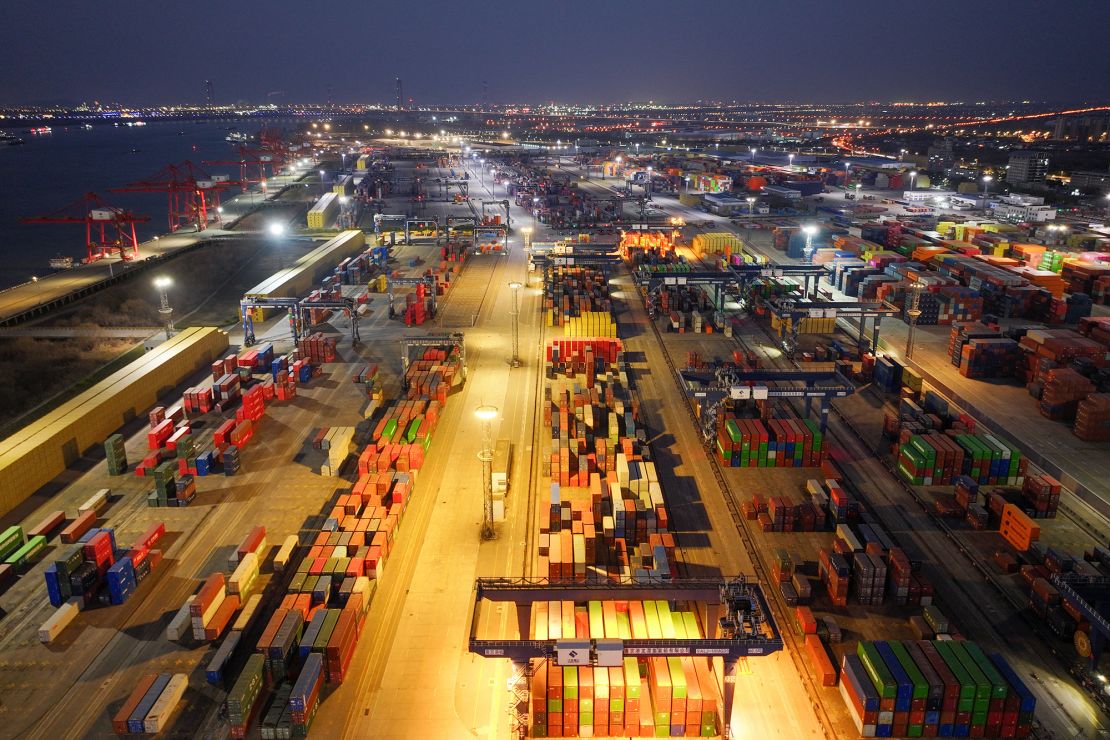If you’re confused by President Donald Trump’s tariff plan, you’re not alone.
Trump and his economic team have made many contradictory statements about the rationale for tariffs, leaving American multinational businesses unsure how to plan, and foreign countries unclear on how to negotiate. Trump launched massive and punishing import taxes on Canada and Mexico, only to postpone them for a month in exchange for relatively little from America’s neighbors. Across-the-board Chinese tariffs are on, but a repealed exemption on small items caused massive confusion at the US Postal Service and was temporarily put back in place. And more tariffs on steel and aluminum are expected to be announced Monday, before a potentially far more expansive reciprocal tariff plan is set to be announced later this week.
That may just be the beginning: Trump has hinted at launching tariffs on the European Union, and he has also promised a broader tariff on every single item that comes into the United States.
Tariffs serve an important purpose in the economy. The United States has frequently used tariffs to protect its manufacturing industry, farmers, technology and national security interests. While previous administrations — including Trump’s tariff-heavy first term — tended to use a scalpel as their preferred tariff tool, Trump in his second term is threatening to use a wrecking ball, saying he’ll place tariffs on many goods that the United States doesn’t even produce.
Corporate America, outraged by the tariffs, has lobbied hard against them. Mainstream economists largely agree that Trump’s tariff plan will reignite inflation and slow US economic growth. Last month, the Wall Street Journal’s editors, who typically side with the president’s policies, called Trump’s tariff plan “the dumbest trade war in history.”
But there’s a method behind Trump’s tariff plan.
Why Trump wants tariffs
Trump has used and promised to expand tariffs for three primary purposes: to raise revenue, to bring trade into balance and to bring rival countries to heel.

Those are often conflicting rationales that can make negotiations difficult and business planning impossible. For example, a country that Trump targets with punitive tariffs may come to the negotiating table to try to resolve a conflict, as Canada and Mexico did to help reduce the flow of fentanyl and undocumented immigrants into the United States. But if Trump is going to launch across-the-board tariffs to raise revenue and reciprocal tariffs to bring trade into balance, then Mexico and Canada may end up getting hit with tariffs anyway.
Still, the logic behind Trump’s tariffs, even if it’s debatable, exists.
America is running a massive budget deficit, and Trump has said the tariffs will make up for lost revenue — in particular, his 2017 tax cuts, which he has said he wants to extend and expand. In a keynote address to the annual meeting of the World Economic Forum last month, Trump predicted that his tariffs would bring in hundreds of billions of dollars — perhaps trillions of dollars — into the US Treasury.
Trump routinely criticizes American trade policy for “subsidizing” foreign countries, saying America is “losing” hundreds of billions of dollars to its neighboring nations. Trump is imprecisely talking about the trade gap, the difference between what America exports and imports. Some economists caution that Trump’s language about America’s trade gap presents an unfair representation of what has become a crucial mechanism for the US economy — its ability to purchase services offered by other countries as well as stuff that isn’t made here much, like coffee. But reciprocal tariffs, which Trump says he’ll announce Tuesday or Wednesday, would match other countries’ tariffs dollar for dollar with the aim of bringing trade into balance.
And Trump has threatened tariffs because they can force countries to give up something he believes is in America’s best interest. For example, his punitive tariffs on China and delayed tariffs on Canada and Mexico are aimed at getting America’s biggest trading partners to reduce the amount of undocumented immigrants and fentanyl coming across America’s borders. Although tariffs are charged to importers, they can dissuade buyers from purchasing goods from tariffed countries, hurting those nations’ economies. That has led some foreign countries to seek agreements to avoid tariffs — for example, Mexico and Canada last week agreed to expand border patrols.
That’s why Trump has called “tariff” the fourth-most beautiful word in the dictionary, behind “God,” “love” and “religion”: It’s a multifaceted tool to achieve three goals.
The problem is it’s hard to achieve all three simultaneously. If countries do what Trump wants to avoid tariffs, the United States can’t raise the revenue it needs. If the United States is going to impose tariffs on foreign countries anyway, countries have no incentive to come to the table. And if trade needs to be brought into balance, putting tariffs in place has led to retaliatory tariffs, igniting a trade war that can hurt American industry and consumers.
What’s already in place and what’s next?
Last week, Trump imposed a 10% tariff on all Chinese goods imported to the US on top of all existing tariffs already in place on China. After those tariffs went into effect Tuesday, China quickly retaliated by placing tariffs on some chips and metals, began investigating Google and placed the maker of the Calvin Klein and Tommy Hilfiger brands on its unreliable entities list.
But Trump already began dialing back those tariffs, pausing taxes on any goods worth $800 or less imported into the US until the Commerce Department can develop a system for imposing those hard-to-track items. Trump also paused 25% across-the-board tariffs on Mexican and Canadian imports until at least March 1.
Trump, speaking to reporters on Air Force One Sunday, said he planned on announcing a 25% tariff on all steel and aluminum imports into the United States Monday. China has been flooding the global market with cheap steel, hurting production around the world — including in the United States, albeit largely indirectly. Steel tariffs in the first Trump administration boosted domestic hiring and production — but also prices.
Trump also said he planned to hold a separate news conference Tuesday or Wednesday to announce massive new reciprocal tariffs, which could match other countries’ tariffs on US goods dollar-for-dollar.
“Very simply, it’s if they charge us, we charge them,” Trump said.
In addition to the across-the-board 10% tariff on all imports and the EU threats, Trump in the past has suggested he may use tariffs to compel Denmark to give the United States control of Greenland.
He did not provide many details about how expansive the new tariffs would be or when they may go into effect.

![Commercial trucks cross the Lewiston-Queenston Bridge border crossing into the United States on February 04, 2025 in Niagara Falls, Canada. U.S. President Donald Trump risked starting a trade war after threatening a 25 percent tariff on many goods shipped from Canada into the United States. Yesterday, before the tariffs were enacted, it was announced that there would be a 30-day pause on the tariffs. ]](https://media.cnn.com/api/v1/images/stellar/prod/gettyimages-2197651413.jpg?c=16x9&q=w_1280,c_fill)






